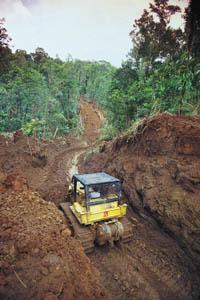Severe Amazon deforestation
1997/04/01 Urkizu, Urtzi Iturria: Elhuyar aldizkaria
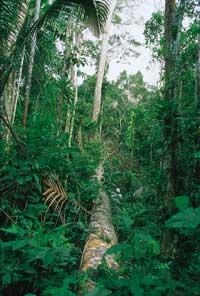
It is quite clear that the forest disaster and political decisions go largely together. As for what is destroyed, there are many discussions, percentages and data vary by sources and calculation criteria. Those responsible will therefore be one or the other if you ask in different places. However, Philip M. Note the following statement by the ecologist and researcher Fearnside: “One third of deforestation is due to cattle ranchers who cultivate territories below one hundred hectares and another two thirds to large farms.”
When we talk about the Amazon we mean the initial forest, which covers four million square kilometers. In its administrative region, nine Brazilian states, known as the legal Amazon, meet.
Non-conformity percentages
In February 1989, Brazilian President José Sarney said that only 5.12% of the legal Amazon disappeared from the arrival of European settlers until 1988. A month later, some images of the Landsat satellite confirmed the above data. However, not all researchers agree. According to Fearnsid, on the one hand, at the time of carrying out the calculations did not take into account deforestation prior to 1960, and on the other hand, the roturation of the common forest and other plant plantations was not considered. The 1989 World Bank percentage could be closer to reality, with a forest loss close to 11% (double that of President Sarney). According to current data, the INPA (National Institute of Amazonian Research) states that since the arrival of European settlers, 11.8% of the forest has been destroyed.
A worrying fact is that the Amazon disaster has occurred in a very short time. Deforestation has not occurred gradually, but at a very rapid speed, and if so, the remaining forest can disappear in a few decades.
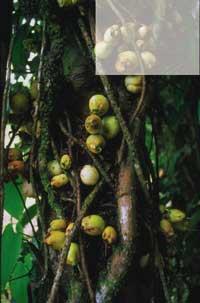
According to researcher Fearnside, the greatest danger is the location of deforestation. The destruction occurs mainly to the South and the East, but small areas of friction around the roads reach much of the region. This expansion can endanger the survival of the virgin forest. The construction of new roads will allow the opening of great clearings in the beautiful western lands. In addition, the deforestation generated by road construction is outside government control.
Geography of deforestation
In the last decade the geography of deforestation has undergone numerous changes. In the whole of the Amazon, the rate of deforestation of 1991 was lower than the annual average of 1978-1988. This data can be understood by the decrease produced in the states of Pará, Tocantins, Rondonia, Amazonas and Acre. Bear in mind that the explosion of exploitation of northern Brazil (in the states of Amapa and Roraima) occurred from 1988. The decline also did not prevent the continuation of disasters: Between 1991 and 1992 13,800 km 2 were destroyed and between 1993 and 1994 14,900 km 2 each year. At present, four thousand hectares disappear every day, with a very poor use of exploitation and a low yield for the people of the region.
The decline in deforestation between 1987-1991 was due, for its part, to an economic delay: the fazendeiros (the owners of the larger farms) invest less money than in previous years in clearings. The government, in turn, had less public money to build roads and favor agrarian colonization.
Excuses and poverty of politicians
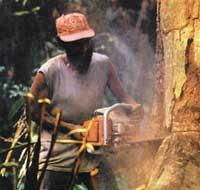
Given the consequences of the economic delay, Brazil's economic recovery is accompanied by an increase in deforestation. The only way to avoid this is by making immediate decisions on the part of the government: for example, combating land speculation; changing the criteria used so far in the granting of property titles to control the pastures that occur when the forest is lost; stopping existing aid for rotations; using stricter criteria of analysis of the ecological influence; launching an agrarian reform in the Amazon or trying to create employment in the areas of emigration.
Politicians reduce the responsibilities of deforestation and almost always blame small farmers and ranchers. But the World Bank's initiative to reduce deforestation is based on the following statement: “Humans don’t destroy the tropical forest because they like it, most clean the land to eat.”
The above theory necessarily leads us to the following conclusion: “If you are against deforestation you are against the people.” This is a common argument for politicians, but the data we have leads us to think something else.
Researchers say otherwise
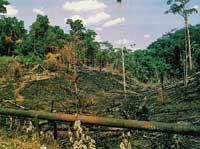
According to Amazonian researcher Fearnside, the theories of politicians have nothing to do with reality. The deforestation caused by small farmers is scarce. Large livestock and agricultural farms receive government aid and the fazendeiro continue to rotate on a large scale. This tendency to blame the poor is considered worrisome by most environmentalists and scientists, who are aware of the serious situation in the interior of the Amazon.
No practical measures against deforestation have been implemented to date. According to a 1991 study, the most serious destruction occurs in states where large livestock farms exist, especially in the state of Mato Grosso. If we focus on percentages, small farmers account for about 30% of deforestation and large and medium fairs for 70%.
In carrying out the agrarian reform, Fearnside argues that the use of deforested lands should be used. The inhabitants of the small villages of the Amazon meet their needs for a short time, but this model cannot survive for a long time. Therefore, from now on we will have to open new paths. The implementation of livestock in cleared forests would be a good measure, reserving forest harvesting. But above all measures we must take into account the environment, taking care of biodiversity, using carbon stocks and recycling water.
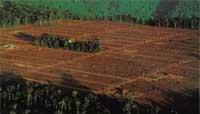
Given this situation, we can say that it is practically impossible to place a large number of inhabitants in the Amazon. Many of its inhabitants will have to look for their lives outside the rural Amazon, especially in the cities.
Stopping the current deforestation should be a priority for politicians, controlling the farms that are being enriched by this serious ecological damage.

Gai honi buruzko eduki gehiago
Elhuyarrek garatutako teknologia





